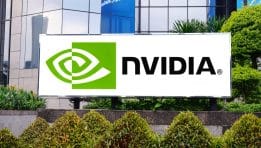The market has pivoted to a single strategic premise: AI leadership requires unprecedented capital intensity. For the leading AI spenders—Meta, Microsoft, Alphabet, Nvidia, Amazon, Apple and Oracle—the CapEx-to-Sales ratio has pushed past roughly 18%, nearly doubling in the last eighteen months. Pre-2020, the cohort averaged about 8%. At the same time, technology’s weight in the S&P has climbed toward record territory, concentrating index-level performance in a handful of names. The through-line is clear: a data-center arms race across compute, power, land and cooling.
What the chart shows—and why it matters now
The highlighted surge marks an abrupt acceleration after a period of relative stability. In market terms, we’re seeing front-loaded investment to deploy compute, storage and high-throughput networking at global scale. The near-term financial trade-off is straightforward: free cash flow compression via higher depreciation and amortization, set against the build-out of platforms for monetizing AI—generative search, automated advertising, code copilots and enterprise cloud AI.
The financial mechanics: depreciation today, ROI tomorrow
Elevated CapEx expands the asset base and raises depreciation for years, making margins look heavier in the short run. Management teams are placing an explicit bet on sustained utilization of GPU/CPU fleets, attractive workload mix, and reliable conversion from usage to revenue. If utilization falters because of grid constraints, logistics bottlenecks or slower enterprise adoption, return on invested capital will undershoot and force reprioritization. If monetization keeps pace, productivity and EPS can inflect through a full cycle.
Value chain dynamics: tailwinds and bottlenecks
The investment wave is constructive for advanced semis, HBM memory, interconnects, high-speed optical networking at 800G/1.6T, power and cooling infrastructure, and data-center REITs. Yet the chokepoint is no longer just silicon; land, permits and grid capacity are now scarce. Energy pricing, environmental regulation and substation build-outs can delay deliveries, lift unit CapEx and crowd out projects with marginal economics.
Execution risks: pricing, cannibalization, regulation
Enterprise AI pricing is a moving target. If competition compresses price quickly, payback will rely more on operating efficiency than on premium pricing. Cannibalization risk between legacy products and AI-native offerings is non-trivial. On the policy axis, privacy, copyright and energy-usage scrutiny may add compliance cost and reshape market structure.
What to watch in upcoming prints
Investors should track four vectors closely: disclosure on AI revenue and its mix, the cadence of power hookups and long-term PPAs, delivery schedules and fleet utilization, and the depreciation curve across 2025–2027. Any revision to CapEx guides or to energy-efficiency targets will signal whether we’re early in a super-cycle or approaching a local peak.
Forward view: structural acceleration vs. cyclical repricing
Sentiment currently supports oversized investment relative to history. As tech’s index weight rises, so does sensitivity to execution. If the infrastructure build translates into measurable productivity—better advertising ROI, developer-tool adoption and enterprise AI contracts—the model self-validates. If not, a repricing phase will follow, with less leniency for capital-heavy projects. The strategic convergence of Meta, Microsoft, Alphabet, Nvidia, Amazon, Apple and Oracle around massive CapEx is the story; the next chapter will be written in cash conversion and earnings power, not in the chart.
Comparison, examination, and analysis between investment houses
Leave your details, and an expert from our team will get back to you as soon as possible
* This article, in whole or in part, does not contain any promise of investment returns, nor does it constitute professional advice to make investments in any particular field.
To read more about the full disclaimer, click here- Ronny Mor
- •
- 8 Min Read
- •
- ago 28 minutes
 FedEx Names Vishal Talwar as Chief Digital Officer to Drive Digital Transformation
FedEx Names Vishal Talwar as Chief Digital Officer to Drive Digital Transformation
FedEx has announced the appointment of Vishal Talwar as its new Chief Digital Officer (CDO), signaling a major push toward
- ago 28 minutes
- •
- 8 Min Read
FedEx has announced the appointment of Vishal Talwar as its new Chief Digital Officer (CDO), signaling a major push toward
- orshu
- •
- 7 Min Read
- •
- ago 2 hours
 Trump Signs Executive Order Easing Space Industry Rules in Musk’s Favor
Trump Signs Executive Order Easing Space Industry Rules in Musk’s Favor
Former President Donald Trump has signed a landmark executive order aimed at reducing regulatory barriers for the U.S. space industry,
- ago 2 hours
- •
- 7 Min Read
Former President Donald Trump has signed a landmark executive order aimed at reducing regulatory barriers for the U.S. space industry,
- sagi habasov
- •
- 7 Min Read
- •
- ago 2 hours
 Trump-Nvidia Agreement Paves Way for Progress in Global Trade Tensions
Trump-Nvidia Agreement Paves Way for Progress in Global Trade Tensions
Former President Donald Trump’s recent agreement with Nvidia has set the stage for a potential breakthrough in the ongoing global
- ago 2 hours
- •
- 7 Min Read
Former President Donald Trump’s recent agreement with Nvidia has set the stage for a potential breakthrough in the ongoing global
- Lior mor
- •
- 7 Min Read
- •
- ago 3 hours
 Roblox Achieves First High-Grade Rating Amid Rapid Growth Surge
Roblox Achieves First High-Grade Rating Amid Rapid Growth Surge
Roblox Corporation has reached a major milestone, earning its first high-grade rating from credit agencies, driven by rapid user growth,
- ago 3 hours
- •
- 7 Min Read
Roblox Corporation has reached a major milestone, earning its first high-grade rating from credit agencies, driven by rapid user growth,












